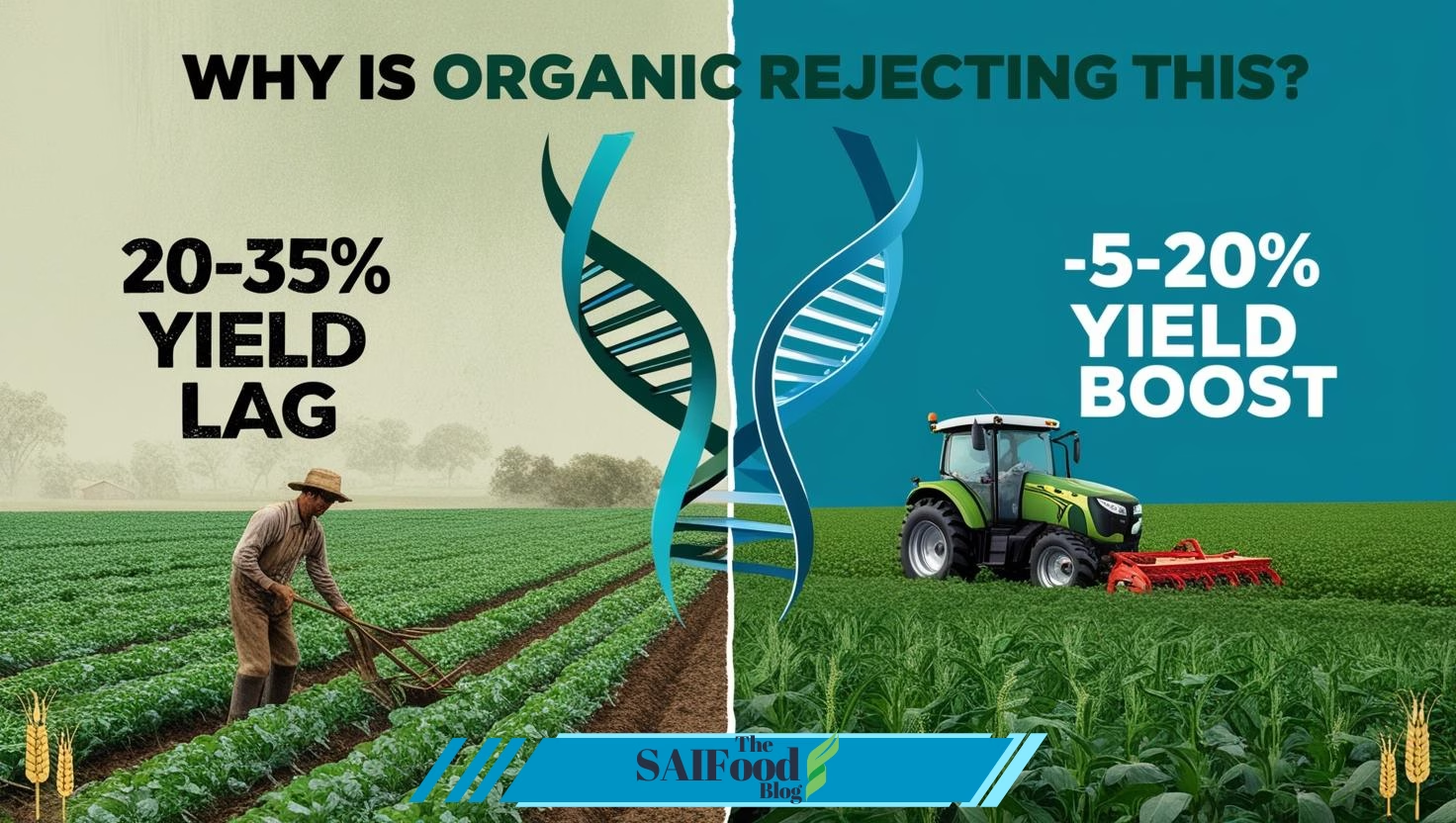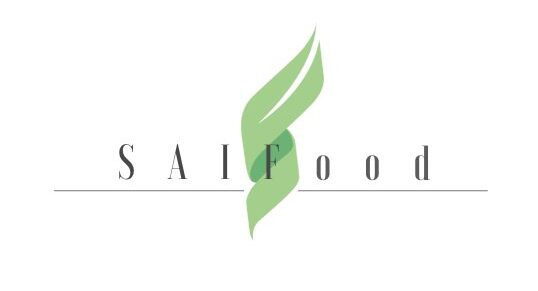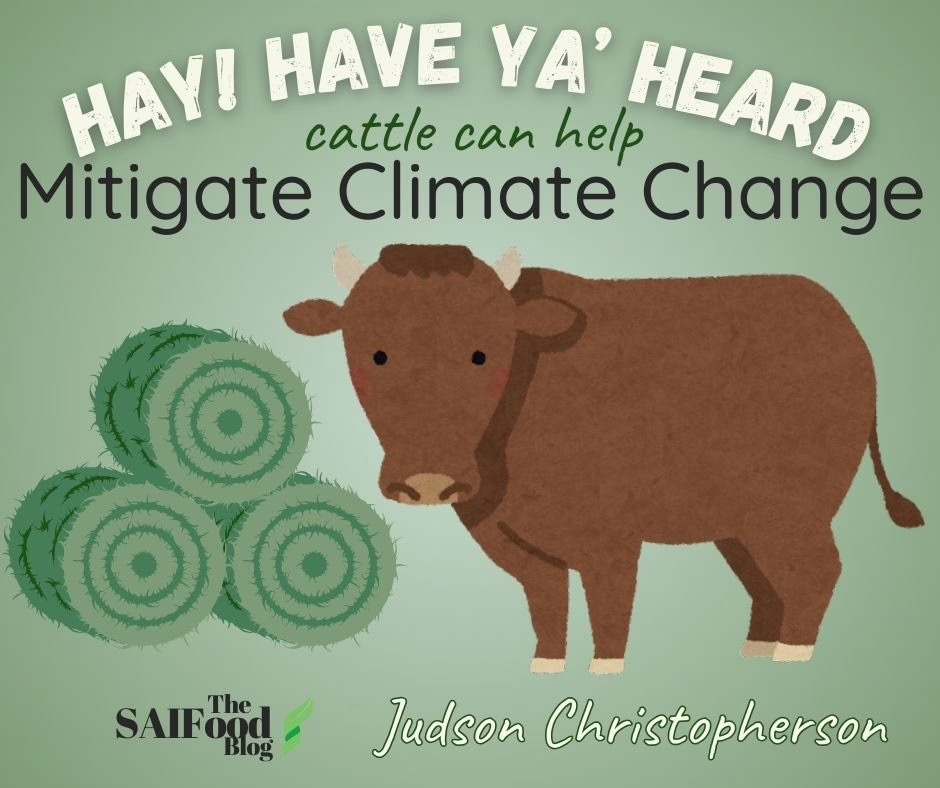AI-Generated News
Microsoft CoPilot (2025). Accessed 2025-03-31.
xAI. (2025, March 10). List of tariff developments affecting Canada [AI-generated response]. Grok 3. (No URL available for proprietary tool).

Canadian AG News:
Recent developments in Canadian agriculture have been shaped by trade tensions, drought conditions, and policy changes, each contributing to challenges and adaptations within the sector. Below is an overview of these key factors:
Latest Updates on Trade Tensions and Tariffs: Impact on Canadian Agriculture
March 31, 2025 - The ongoing trade tensions between Canada and the United States have escalated with the implementation of 25% tariffs on a wide range of goods by both nations. This move has significantly reshaped North American trade dynamics, creating a ripple effect that touches nearly every aspect of cross-border commerce, particularly in the agricultural sector.
Impact on Canadian Agriculture
The imposition of these tariffs has had profound implications for Canadian agriculture. The tariffs have increased the cost of exporting Canadian agricultural products to the U.S., one of Canada's largest trading partners. This has led to a decrease in demand for Canadian goods in the U.S. market, affecting farmers and agribusinesses across the country.
Key Agricultural Products Affected:
- Canola: China has imposed 100% tariffs on Canadian canola oil and meal, severely impacting Canadian farmers who rely on this export market.
- Pork and Seafood: Additional tariffs on pork, fish, and seafood products have further strained the agricultural sector.
- Grains and Oilseeds: Reduced demand from major markets like China and increased competition from other countries have led to a decline in exports.
Government Response
In response to these challenges, the Canadian government has announced several measures to support the agricultural sector. These include increasing the compensation rate under the AgriStability program and providing interim payments to help farmers manage the financial impact of the tariffs. Prime Minister Justin Trudeau has also urged Canadians to prioritize domestic products to bolster the national economy during these challenging times.
Regional Cooperation: China, Japan, and South Korea
In response to the U.S. tariffs, China, Japan, and South Korea are strengthening their cooperation. The three countries held their first economic dialogue in five years, agreeing to jointly respond to the tariffs and enhance regional trade cooperation.
Key Points of Cooperation:
- Supply Chain Cooperation: Strengthening supply chain cooperation, particularly in the semiconductor industry. Japan and South Korea are seeking to import raw semiconductor materials from China, while China is interested in purchasing chip products from Japan and South Korea.
- Free Trade Agreement: Pledging to closely cooperate on comprehensive and high-level negotiations for a South Korea-Japan-China free trade agreement to promote regional and global trade.
- Export Controls: Engaging in more dialogue on export controls to ensure smoother trade operations and mitigate the impact of U.S. tariffs.
Looking Ahead
The future of Canadian agriculture amidst these trade tensions remains uncertain. While the government is taking steps to mitigate the impact, the long-term effects of these tariffs could reshape the agricultural landscape in Canada. Farmers and agribusinesses will need to adapt to these new trade realities, exploring new markets and strategies to sustain their operations.
Global State of Trade Tensions and Partnerships
Current Trade Tensions
As of 2025, global trade tensions remain high, influenced by several key factors:
- US-China Relations: The United States has increased tariffs on Chinese exports, including electric vehicle batteries and solar panels, to address perceived unfair trade practices[1]. This has further strained relations between the two economic giants.
- Geopolitical Pressures: Ongoing conflicts, such as Russia's war in Ukraine, continue to disrupt global trade dynamics[1]. These tensions have led to realignments in trade flows, with countries increasingly trading based on geopolitical alignments rather than purely economic factors[1].
- US Trade Policies: The return of President-Elect Trump has brought renewed focus on protectionist trade policies, potentially leading to further trade barriers[1].
New Trade Partnerships
Despite these tensions, several new trade partnerships have formed:
- European Union and Mercosur: In December 2024, the European Union and the Mercosur countries (Argentina, Brazil, Paraguay, and Uruguay) finalized a long-delayed free trade agreement[1]. This deal aims to boost trade between Europe and South America.
- Global South Alliances: Nations in the Global South are increasingly forming new trade alliances that bypass traditional Western markets. This trend reflects a broader geopolitical shift towards a multipolar world trade system[2].
- Regional Growth: Regions like South & Central Asia, Sub-Saharan Africa, and ASEAN countries are experiencing the fastest trade volume growth, driven by new partnerships and economic strategies[3].
Partnerships Breaking Down
Conversely, some trade relationships are deteriorating:
- US-China: The ongoing tariff increases and trade barriers have led to a significant breakdown in US-China trade relations[1].
- Europe and Central Asia: Trade growth in Europe and Central Asia has slowed due to weaker demand and policy shifts, impacting traditional trade partnerships[4].
Predicted Outcomes
The global trade landscape is expected to remain volatile, with geopolitical tensions continuing to shape trade policies and partnerships. While some regions are finding new opportunities through strategic alliances, others are grappling with the fallout from deteriorating relationships.
References
Yes, China, Japan, and South Korea are indeed looking to strengthen their cooperation in response to the recent U.S. tariffs. The three countries held their first economic dialogue in five years, where they agreed to jointly respond to the tariffs and enhance regional trade cooperation[2][1].
Key Points of Cooperation:
Supply Chain Cooperation: The countries plan to strengthen their supply chain cooperation, particularly in the semiconductor industry. Japan and South Korea are seeking to import raw semiconductor materials from China, while China is interested in purchasing chip products from Japan and South Korea[2][1].
Free Trade Agreement: The trade ministers from the three nations have pledged to closely cooperate on comprehensive and high-level negotiations for a South Korea-Japan-China free trade agreement. This agreement aims to promote regional and global trade[2][1].
Export Controls: They also agreed to engage in more dialogue on export controls to ensure smoother trade operations and mitigate the impact of U.S. tariffs[2][1].
This collaboration marks a significant step towards bolstering regional trade amidst the challenges posed by the U.S. tariffs. It reflects a broader trend of countries seeking to form new alliances and strengthen existing ones in response to shifting global trade dynamics.
References
Crop Production in Canada
For the 2025 growing season, Canadian farmers are facing a mixed outlook:
- Wheat and Coarse Grains: The area seeded to wheat, including durum, is expected to increase by 2.6% year-over-year, driven by higher spring and winter wheat plantings[1]. Coarse grains, such as corn, oats, and rye, are also forecast to see a 1.4% increase in seeded area[1].
- Oilseeds: The area seeded to oilseeds, including canola and soybeans, is expected to decrease by 1.9% due to lower seeding intentions[1].
- Pulses and Special Crops: A slight decrease of 2% in the area seeded to pulses and special crops is anticipated[1].
Overall, assuming normal growing conditions and trend yields, production is expected to decrease slightly year-over-year[1].
Livestock Rearing in Canada
The livestock sector in Canada is also experiencing some changes:
- Cattle: The Canadian cattle herd is forecast to continue its long-term trend of contraction at the beginning of 2025 but is expected to stabilize by the end of the year due to improved feed pricing and availability[2]. Beef production and slaughter are projected to be lower, with exports remaining strong[2].
- Swine: The swine herd is expected to remain relatively stable, with slight growth in Western Canada offsetting contractions in Eastern Canada[2]. Slaughter rates are forecast to increase by 1% compared to 2024[2].
Global Outlook
Globally, the agricultural outlook varies by region:
- United States: Similar to Canada, the U.S. is facing challenges due to tariffs and trade uncertainties. However, strong global demand is expected to support crop exports[3].
- Europe: European farmers are dealing with fluctuating weather conditions and policy changes related to sustainability and environmental impact[3].
- Asia: In Asia, particularly China, the focus remains on increasing domestic production to reduce reliance on imports, which could impact global trade dynamics[3].
Predicted Outcomes for the Season
The 2025 season is expected to be challenging for both crop production and livestock rearing due to external factors such as tariffs, trade policies, and weather conditions. However, strong global demand and strategic adjustments by farmers and governments could help mitigate some of these challenges.
References
Changes to Canada's Carbon Tax: April 1, 2025
Effective April 1, 2025, significant changes to Canada's carbon tax policy are being implemented. Here's a detailed look at what's changing and how it will affect various sectors:
Key Changes
Removal of Consumer Carbon Price: The federal government is eliminating the consumer carbon price, which means the federal fuel charge will no longer apply to consumers[1][2]. This change affects provinces where the federal fuel charge was in place, including Newfoundland and Labrador, Prince Edward Island, Nova Scotia, New Brunswick, Ontario, Manitoba, Saskatchewan, Alberta, Nunavut, and Yukon[1].
Final Canada Carbon Rebate: Eligible Canadians will receive a final Canada Carbon Rebate payment starting April 22, 2025[1]. This rebate was designed to return proceeds from the federal fuel charge to residents in affected provinces.
Focus on Industrial Carbon Pricing: While the consumer carbon price is being removed, the government will continue to enforce carbon pricing for large industrial emitters. This approach aims to maintain efforts to reduce greenhouse gas emissions while alleviating the financial burden on households[1][2].
Impact on Consumers
Fuel Prices: Consumers will see immediate savings at the pump. The removal of the carbon tax is expected to reduce fuel prices as follows:
Heating Costs: Home heating fuels like propane and natural gas will also become more affordable, reducing household expenses[2].
Impact on Agriculture
Cost Reductions: The removal of the consumer carbon price will lower operational costs for farmers, particularly in terms of fuel and heating expenses[2]. This is expected to provide financial relief to the agricultural sector, which has been significantly impacted by rising costs.
Competitiveness: By focusing carbon pricing on large industrial emitters, the government aims to protect the competitiveness of Canadian agriculture while still addressing environmental concerns[1].
Looking Ahead
These changes mark a shift in Canada's climate strategy, moving away from consumer taxation and towards holding large polluters accountable. While this may lead to increased fossil fuel consumption, the government believes that maintaining industrial carbon pricing will continue to drive emissions reductions.
References
More News
Latest Updates on Trade Tensions and Tariffs: Impact on Canadian Agriculture
March 31, 2025 - The ongoing trade tensions between Canada and the United States have escalated with the implementation of 25% tariffs on a wide range of goods by both nations[1]. This move has significantly reshaped North American trade dynamics, creating a ripple effect that touches nearly every aspect of cross-border commerce, particularly in the agricultural sector.
Impact on Canadian Agriculture
The imposition of these tariffs has had profound implications for Canadian agriculture. The tariffs have increased the cost of exporting Canadian agricultural products to the U.S., one of Canada's largest trading partners. This has led to a decrease in demand for Canadian goods in the U.S. market, affecting farmers and agribusinesses across the country[1].
Key Agricultural Products Affected:
- Canola: China has imposed 100% tariffs on Canadian canola oil and meal, severely impacting Canadian farmers who rely on this export market[2].
- Pork and Seafood: Additional tariffs on pork, fish, and seafood products have further strained the agricultural sector[2].
- Grains and Oilseeds: Reduced demand from major markets like China and increased competition from other countries have led to a decline in exports[3].
Government Response
In response to these challenges, the Canadian government has announced several measures to support the agricultural sector. These include increasing the compensation rate under the AgriStability program and providing interim payments to help farmers manage the financial impact of the tariffs[2]. Prime Minister Justin Trudeau has also urged Canadians to prioritize domestic products to bolster the national economy during these challenging times[1].
Looking Ahead
The future of Canadian agriculture amidst these trade tensions remains uncertain. While the government is taking steps to mitigate the impact, the long-term effects of these tariffs could reshape the agricultural landscape in Canada. Farmers and agribusinesses will need to adapt to these new trade realities, exploring new markets and strategies to sustain their operations.
References
As of March 10, 2025, the landscape of fresh produce availability in Canada is influenced by recent international trade tensions and the resulting tariffs. Here's an overview:
Domestic Produce:
Canada's domestic agriculture continues to supply a variety of fresh produce without any additional tariffs. Depending on the season, this includes:
- Root Vegetables: Such as potatoes, carrots, and beets.
- Leafy Greens: Including lettuce, kale, and spinach.
- Berries: Like strawberries, blueberries, and raspberries.
- Apples and Pears: Widely grown in regions like British Columbia and Ontario.
Purchasing locally grown produce supports Canadian farmers and ensures tariff-free products.
Imports from the United States:
The U.S. imposed a 25% tariff on Canadian goods starting March 4, 2025 (wsj.com). In retaliation, Canada implemented a 25% tariff on various U.S. products, effective the same day (restaurantscanada.org).These tariffs have impacted the cost of imported fresh produce from the U.S., leading to higher prices for consumers.
Imports from Mexico:
Similar to the U.S., Mexico is subject to a 25% tariff on its goods entering Canada as of March 4, 2025 (wsj.com).This affects a range of fresh produce items typically imported from Mexico, such as avocados, tomatoes, and peppers, resulting in increased prices for these products.
Imports from China:
China has announced retaliatory tariffs on Canadian agricultural products, including a 100% tariff on rapeseed oil, peas, and oilcakes, effective March 20, 2025 (reuters.com). While these measures primarily affect Canadian exports to China, they may indirectly influence domestic prices and availability of certain produce items.
Tariff-Free Imports:
Fresh produce imported from countries not currently engaged in tariff disputes with Canada remains unaffected. This includes imports from countries within the European Union, South America (excluding Mexico), and other regions with established trade agreements. Products such as citrus fruits from Spain, bananas from Ecuador, and kiwis from New Zealand are examples of tariff-free imports available in Canadian markets.
Consumer Considerations:
Given the current trade environment, consumers may notice fluctuations in the prices of certain imported produce. To manage costs while maintaining a healthy diet, consider the following strategies:
- Prioritize Local Produce: Focus on purchasing seasonal, locally grown fruits and vegetables.
- Explore Alternative Imports: Seek out produce from countries not subject to current tariffs.
- Adjust Consumption Habits: Be flexible with meal planning to incorporate more affordable, tariff-free produce options.
Staying informed about ongoing trade developments and their impact on food prices can help consumers make cost-effective and nutritious choices.
Effective March 4, 2025, Canada imposed a 25% tariff on $30 billion worth of goods imported from the United States. These measures are in response to U.S. tariffs on Canadian products and will remain until the U.S. removes its tariffs.
The affected U.S. products include:
Poultry and Meat Products: Live poultry such as chickens, ducks, geese, turkeys, and guinea fowls; various cuts and offal of these birds, both fresh and frozen.
Dairy Items: Milk and cream, concentrated or containing added sugar.
Vegetables: Fresh or chilled potatoes, tomatoes, onions, and shallots.
Fruits and Nuts: Fresh apples, grapes, cranberries, and almonds.
Beverages: Certain types of wines and spirits.
Paper Products: Various types of paper and paperboard.
Textiles: Specific woven fabrics and apparel items.
Metal Products: Certain aluminum and steel products.
Consumer Goods: Items like washing machines and refrigerators.
These tariffs apply exclusively to goods originating from the U.S., as defined by the Determination of Country of Origin for the Purposes of Marking Goods (CUSMA Countries) Regulations. Goods in transit to Canada before the enforcement date are exempt.
For a comprehensive list of the specific products and their tariff classifications, refer to the official announcement by the Department of Finance Canada.
- All Posts
- Agri-vated
- Agriculture
- Agriculture Myth Busting
- Articles
- BIOTECHWEEK
- Consumers
- Course
- Environment
- Faces of Agriculture
- Feedback
- Food
- Innovation
- International
- Let's Talk Farming
- Livestock
- New
- Rant
- Student Blogs
- Sustainable


Old News Worth Reading
2021
Policy Brief on Glyphosate and Herbicide Tolerant Crops
July 27, 2021
As part of Dr. Smyth’s Research Chair, his research team and Masters Student, Chelsea Sutherland, have surveyed more than a hundred Saskatchewan farmers, and have inquired on the contribution of beneficial technologies, such as GMHT crops and glyphosate, to sustainable adoptions. Check out Dr. Smyth and team’s policy brief here.
Policy Brief on Quantifying Saskatchewan’s Crop Production Soil Carbon
July 13, 2021
As part of Dr. Smyth’s Research Chair, his research team and Masters Student, Chelsea Sutherland, have quantified the provinces crop production soil carbon from the early 90s to now. Check out Dr. Smyth and team’s policy brief here.
2018/19
Newsweek Article – Stuart Smyth & Henry Miller
March 28, 2019
Newsweek has published the opinion piece “Monsanto, Roundup and Cancer: Cutting chemicals from agriculture is a cost we can’t et afford” by Stuart J. Smyth and Henry I Miller. Their article shares why they think we still need glyphosate (Roundup®), and why we can’t just toss it out from agricultural production so hastily.
Check out their article at Newsweek.
Governance of Digital Sequence Information and Impacts For Access and Benefit Sharing
SEPT 18, 2018: THE AGENDA WITH STEVE PAIKIN
Dr. Smyth was fortunate enough to partake in TVO’s The Agenda with Steve Paikin to discuss “Agricultural Biotech at Home and Abroad” with Crystal Mackay from the Canadian Centre for Food Integrity, Lucy Sharratt of the Canadian Biotechnology Action Network (CBAN), and Ian Affleck from Croplife Canada.
Episode 26: Greenpeace on Trial: Dr. Stuart Smyth
June 4, 2018
Check out Cameron English’s podcast below with guest Dr. Smyth on the success of the Greenpeace student trials.
You can find the full write-up on the podcast along with more of Cameron’s blogs here.
Indicting Greenpeace for Crimes Against Agriculture 2018
Indicting Greenpeace for Crimes Against Agriculture
In “Indicting Greenpeace for Crimes Against Agriculture” Stuart promised to make his student’s mock trial debates available online. Each student group were randomly assigned a statement and the responsibility to either defend or prosecute in a live trial.
The students in this debate statement may be defending and prosecuting statements that do not align with their personal views and this should be taken into consideration when viewing this debate.
The trials will continue 8:30 am CST live on Facebook on November 23, 28 and 30, 2017. The student jury will present their verdicts on December 5th and can be viewed along with the other debate videos.
Tuesday November 21st: Day 1 of the Crimes Against Agriculture
Thursday November 23rd: Day 2 of the Crimes Against Agriculture
Tuesday, November 28th: Day 3 of the Crimes Against Agriculture
Thursday, November 30th: Day 4 of the Crimes Against Agriculture
…. Tuesday, December 5th: Jury Verdicts of the Crimes Against Agriculture
Live 8:30 am CST Live on Facebook



